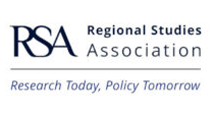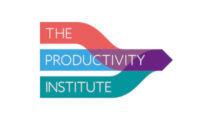References
Adams, R. B. and D. Ferreira (2009). Women in the boardroom and their impact on governance and performance. Journal of Financial Economics 94(2): 291-309.
Akcigit, U., Grigsby, J., & Nicholas, T. (2017). Immigration and the rise of American ingenuity. American Economic Review, 107(5), 327–331.
Bahar, D., H. Rapoport and R. Turati (2020). Birthplace diversity and economic complexity: Cross-country evidence. Research Policy: 103991.
Bernstein, S., Diamond, R., Jiranaphawiboon, A., McQuade, T., & Pousada, B. (2022). The contribution of high-skilled immigrants to innovation in the United States. National Bureau of Economic Research Working Paper No. W30797.
Bratti, M., & Conti, C. (2014). (2018) The effect of immigration on innovation in Italy, Regional Studies, 52:7, 934-947
Cooke, A., & Kemeny, T. (2017). Cities, immigrant diversity, and complex problem solving. Research Policy, 46(6), 1175-1185.
Docquier, F. and H. Rapoport (2012). Globalization, Brain Drain, and Development. Journal of Economic Literature 50(3): 681-730.
Hong, L., & Page, S. E. (2001). Problem solving by heterogeneous agents. Journal of economic theory, 97(1), 123-163.
Kemeny, T. (2017). Immigrant diversity and economic performance in cities. International Regional Science Review, 40(2), 164-208.
Kerr, W. R., & Mandorff, M. (2023). Social networks, ethnicity, and entrepreneurship. Journal of Human Resources, 58(1), 183-220.
Kerr, S. P., & Kerr, W. R. (2018). Global collaborative patents. Economic Journal, 128(July), 235–272.
Kerr, W. R. (2008). Ethnic scientific communities and international technology diffusion. Review of Economics and Statistics, 90(3), 518–537.
Lee, N. (2014). Migrant and ethnic diversity, cities and innovation: Firm effects or city effects? Journal of Economic Geography 15(4): 769-796.
Mannix, E. and M. A. Neale (2005). What Differences Make a Difference?: The Promise and Reality of Diverse Teams in Organizations. Psychological Science in the Public Interest 6(2): 31-55.
Nathan, M. (2015a). After Florida: Towards an economics of diversity. European Urban and Regional Studies, 22(1), 3-19.
Nathan, M. (2015b). Same Difference? Minority ethnic inventors, diversity and innovation in the UK. Journal of Economic Geography 15(1): 129-168.
Nathan, M. (2016). Ethnic diversity and business performance: Which firms? Which cities? Environment and Planning A: Economy and Space 48(12): 2462-2483.
Orefice, G., H. Rapoport and G. Santoni (2022). How Do Immigrants Promote Exports? Networks, Knowledge, Diversity. IZA Discussion Paper 15722. Bonn, IZA.
Ozgen, C. (2021). The economics of diversity: Innovation, productivity and the labour market. Journal of Economic Surveys, 35(4), 1168-1216.
Ozgen, C., Nijkamp, P., & Poot, J. (2012). Immigration and innovation in European regions. In Migration impact assessment (pp. 261-298). Edward Elgar Publishing.
Sulik, J., Bahrami, B., & Deroy, O. (2022). The diversity gap: when diversity matters for knowledge. Perspectives on Psychological Science, 17(3), 752-767.
Useche, D., Miguelez, E., & Lissoni, F. (2020). Highly skilled and well connected: Migrant inventors in cross-border M&As. Journal of International Business Studies, 51, 737-763.





